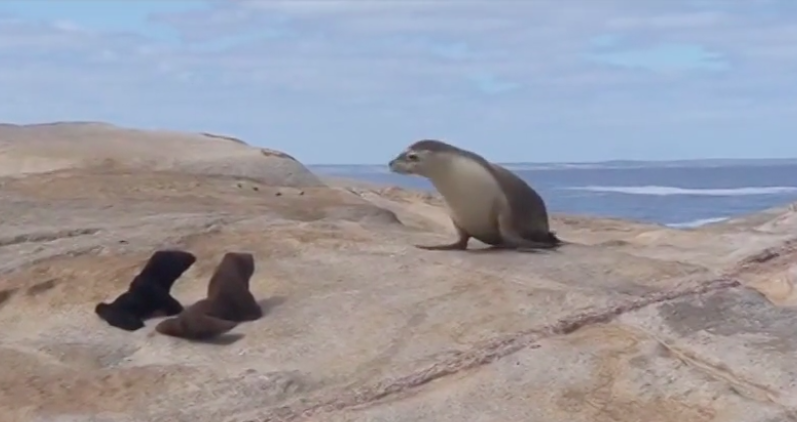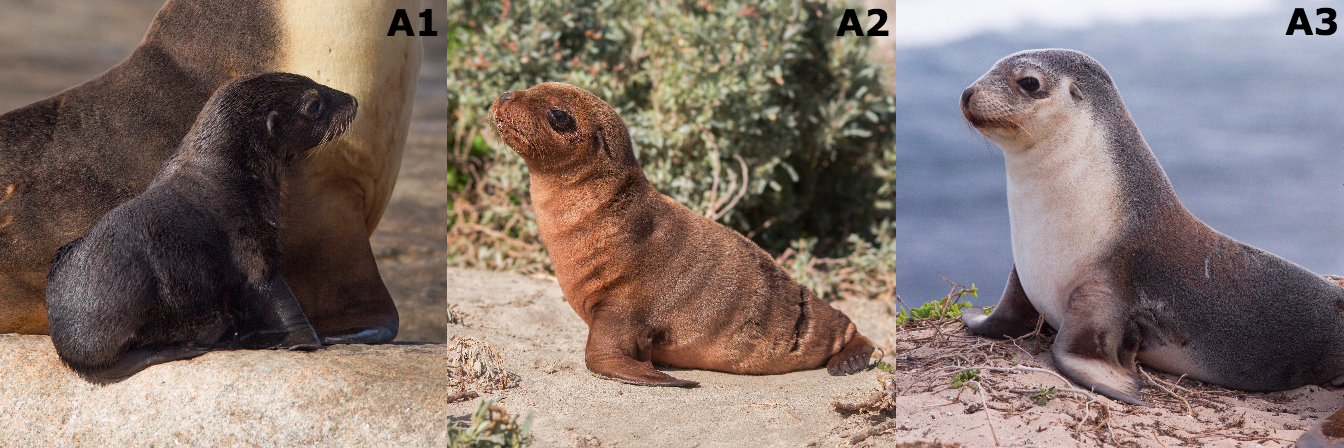Stuffed Animals Help Scientists Learn How Sea Lion Moms Recognize Their Babies
Posted on Categories Discover Magazine

Tending to a nursing newborn is hard enough, but sea lion moms have an extra challenge. To consume enough calories for themselves and their pups, they have to repeatedly leave their babies behind and swim out to sea to hunt. Each time the mothers return, they have to find their pups again. Australian sea lion moms use a pup’s smell and the sound of its calls to recognize it. They also use sight—which scientists learned by creating fake, stuffed sea lion pups, and leaving them for mothers to either accept or attack.
“Pups tend to cluster together in groups while the mothers are away,” says Kaja Wierucka, a graduate student at Macquarie University in Australia. She and her research group have seen as many as 20 pups huddled together in a few square meters. When a mother returns from the ocean, she has to pick her own baby out of the clump. Letting the wrong pup drink her milk would be a waste of hard-won calories. Additionally, the pups tend to wander. “We have seen pups on one side of the colony one day, and then all the way on the other side the next day,” Wierucka says. “It is quite the task for the female to find her very mobile pups in a large colony every few days.”
In earlier studies, the researchers found that sea lion mothers use both sound and scent to find the right pup. But the researchers wanted to know whether mothers also use visual cues. They started their investigation by building fake babies.
“The models were essentially life-size stuffed animals that we made,” Wierucka says. A wire skeleton and filling inside each model helped it pose upright, and synthetic fur covered the models’ bodies.
The researchers designed three models to match the shape, color and average size of pups in three different age groups. Before they’re two months old, Australian sea lion pups have dark, almost black fur, Wierucka says. Between two and four months they’re brown or cinnamon-colored. And around four months, they molt and develop a two-toned coat of gray and beige.
“Because the pups change not only in size, but also in color as they grow, we thought that the females might use this to their advantage,” Wierucka says. The researchers tested 28 sea lion mothers by placing two models in front of them at once. One model matched the age group of the mother’s real pup, and the other resembled a pup either older or younger than her own.
Most of the mothers reacted as if they were seeing their real pup next to a stranger. They either went straight to the model that matched their pup’s age, or approached the non-matching pup model while snorting or biting it. Only seven of the sea lion mothers reacted inappropriately—that is, they approached the non-matching model first, but weren’t aggressive. (In this video, a sea lion mom approaches and sniffs a pup model that matches her own pup’s age. Then another mom approaches a non-matching pup model, bites it, and throws it off a rock.)
This suggests that a female “knows what her pup currently looks like,” Wierucka says, even though the pup may have had a different coat color only a few weeks earlier. The mother “is able to narrow down her search to only pups that look like (and are roughly the same age as) her own,” Wierucka says.
Now the researchers have shown that sight, smell and sound are all part of how a mother sea lion finds her pup. That means they can next begin to explore how these three senses work together to help mothers and offspring recognize and communicate with each other.
Images: Kaja Wierucka.
